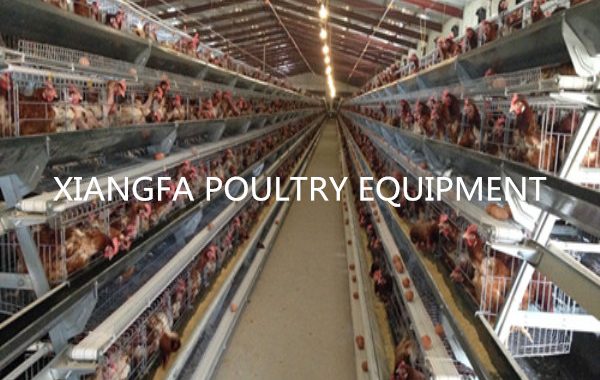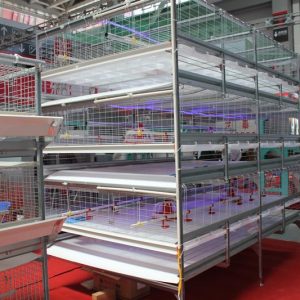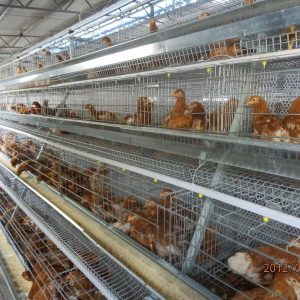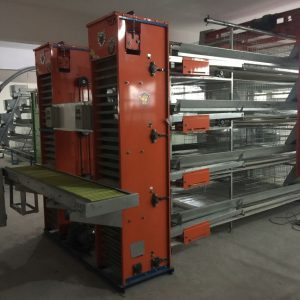
How to completely disinfect the empty period of laying hens?
The “empty pen period” of laying hens is a special period after group panning and before entering the chicken. Disinfection in the empty pen period can eliminate various pathogens remaining in the chicken house. It is an important process for the environmental purification of the chicken house. After disinfection, it can be prevented. The spread of many epidemics has reduced the incidence of new pathogens infected with environmental pathogens. So how do you do it? Let’s take a look below.
At present, it is generally recognized that the emptying period of laying hens is at least 15 days, and the large-scale chicken farm controls the emptying period to 30 days. During the emptying period, the house needs to be thoroughly cleaned, rinsed, flame disinfected, spray disinfected, and fumigated , Ventilation, so as to provide a clean and safe environment for newly introduced chickens.
House cleaning
Empty the remaining eggs and clean the remaining material in the chicken house, and move the movable tools and utensils in the chicken house, such as overhead trucks, flatbed carts, trays, feeders, etc., to the outside of the chicken house for exposure. Thoroughly clean the ground, cage bottom, roof, walls, window sills and other places to remove sundries.
Rinse the house
Rinse out the utensils or equipment removed from the house with a high-pressure water gun, rinse them and put them in the designated location for use. From the top to the bottom, the cleaning chicken house is the ceiling, the feeding pipe, the sterilized copper pipe, the cage, the cage net, the manure removal belt, the driving wall, the wall, etc. After the washing, the manure removal machine is started to remove the dirt on the manure belt. Then flush the trough, the ground and the parts that have not been cleaned for the first pass. After flushing, start the manure cleaning machine to remove the dirt from the manure. Then flush the dirt on the ground, the head and tail racks, the rear fan and the drain. Finally, clean the horizontal and diagonal manure ditch. In winter, the sewage from the dung ditch should be drawn out in time.
Immersion waterline
Soaking the waterline can kill various pathogens in the waterline. After using disinfectants such as peracetic acid and hydrogen peroxide to soak the water line for 24 hours, the water line must be recoiled layer by layer. To avoid personnel safety and prevent burns, rubber gloves must be worn when adding medicine.
Flame disinfection
High-temperature flames kill many harmful microorganisms such as bacteria, viruses, and parasites in the environment. Turn off all fans before starting to conduct flame debugging. The length of the flame should be 30-40cm, not too long. After commissioning, the disinfection of the ground and walls starts from the first lane of the door, and then to the sixth lane, in order from north to south. Adjust the length of the flame according to the actual situation, to avoid burning the egg collection belt and the manure removal belt. Be careful of wires and water pipes when disinfecting the ground before and after. During the disinfection process, the oil fume should be stopped when it is too large, and then disinfect it after proper ventilation. After disinfection, proper ventilation may be performed.
Spray disinfection
Spray disinfection can kill a variety of bacteria, spores, viruses, and fungi in the chicken house environment. Spray disinfection uses povidone iodine, quaternary ammonium salt, chlorine preparations for spray disinfection. Disinfectants should be used as they are. When configuring disinfectant and disinfectant, use the concentration according to the instructions for use. Dispose the disinfectant in the water storage tank and mix well. After the disinfection solution is prepared, connect the disinfection tube to the disinfection machine, and then turn on the power switch.
Disinfection should be from the rear to the front, from the inside of the chicken house to the outside, from top to bottom, the order of the house beams, the walls, and then the cages and the ground. The disinfectant falls uniformly on the entire support system, wall, and ground in the form of a mist. After spraying, the breeder should put clean water in the water storage tank for cleaning. After cleaning, connect a water pipe at the drain of the water storage tank to open the valve to let the sewage drain into the trench.
Fumigation
Formaldehyde fumigation can kill bacterial propagules, spores, fungi and viruses in the chicken house, with the widest disinfection area. Each cubic meter of space needs 15 to 30 ml of 37% to 40% formaldehyde. The fumigation effect is affected by the temperature and humidity of the chicken house. The suitable temperature is higher than 25°C and the relative humidity is greater than 80%. Less than 80%, disinfect it after sprinkling water on the ground. Prepare fumigation basin, formaldehyde, fumigation furnace, protective equipment and other items. Before fumigation, the doors, windows and vents should be closed, the chicken house should be sealed with woven bags and other items, and insulation boards should be installed.
After all the operators evacuated the scene, turn off the lights and doors, and fumigation for 48 hours. After fumigation after 48 sterilization, turn on the fan and the side window to ventilate until there is no formaldehyde smell in the chicken house. I hope that the content shared by the editor can help the majority of chicken farmers!



